Recently I completed acting as teaching assistant for another round of "Hand Tool Heaven" with Jim Tolpin at the Port Townsend School of Woodworking. This is a class for complete novices, and is a bit ambitious in that it aims to skim the surface of essential joinery skills in just five days. It is always a blast to watch people get it, and the class improves each time. The class is not project based per se, but the students do work on shop appliances and layout tools in order to practice their skills. The bench hooks from Jim's "New Traditional Woodworker" are one of these projects. I've helped many students build these workholders, but realized that although I had been demonstrating the operations on scraps, I had not actually built a set myself. I do already have some fully functional bench hooks which I built a few years ago, but wanted to give Jim's design a try at home. I also wanted to see if I could replicate some of the issues the students were having with learning to create dados smoothly and see if I could come up with some solid advice rather than "keep practicing".
The bench hooks take about 15-20 hours for most students to build, although this includes lots of lecture and practice time. They start with rough-sawn lumber which they crosscut, dimension, and true all by hand. As encouragement to any beginning readers or students, let me say that they do not take long once you have a bit of experience with the operations. Here is the set I created the other day:
I added a cutting notch on the left side, largely to see if I could make one accurately enough to rely upon. It came out perfectly, but I opted to utilize the open notch style I am used to on the right edge, since it allows a broad variety of freehand cutting angles:
I did not opt to add the shooting board track, as I believe these appliances are best kept separate unless for some reason storage space is at a huge premium. Bench hooks are quasi-disposable with much use, and a shooting board should last much, much longer. As you can see, I also did not use the finest lumber here. Good enough for bench hooks, but maybe not for a shooting board I want to last a long time. This was the same ponderosa pine the students were using in the class, with walnut ledgers and backstop.
This all had me thinking about bench hooks, and I decided to try something that I had been thinking about for a long time. Christopher Schwarz calls hooks made from a single plank "Old Testament" and I like that as an adjective a great deal. Here is some 3" thick cherry being utilized for the task:
After squaring it, I laid out a design I had seen in the teacher's guide to Sloyd woodworking by Otto Soloman. I did modify his design for the fun of it, to make the hooks proportionally harmonious. If you are familiar with Jim Tolpin's work, this will not surprise you. I made mine 3" square by 9" long, with the feet and backstop being 1" (being a third of the 3") both in width and depth. Although not strictly necessary, I cut relief kerfs since I did not trust the grain of the cherry:
I then popped out large chips with a chisel, a technique I grow to love more and more each time I use it. I suppose a saw could have been used but this is fast and fun:
I used a jack plane (mentioned in the Sloyd book) to clean up a little, although I also did one hook completely by chisel for the fun of it.
Here is one completed and one in the process:
and all done, complete with hanging hole (which I am unlikely to ever use, but who knows):
This shows how they are used. I believe these are intended as general workholders and not especially for sawing as they have no provision for the blade. I am tempted to make a notch in one, or to make a third with no backstop. They are quite narrow, but when used as a pair, they hold the work very securely. I used them to make some dados and expect I will find them quite handy to have around:
I also tried out something I had seen on The English Woodworker's site:
This is a very quick and easy way to hold work against a dog for traverse planing. Wish I would have known this a long time ago. I think all of my planing battens will now have a bird's mouth. If this function is not evident, please see the link above, or consult this image with the workpiece pulled ahead to show how it was held. Give it a try, and thanks, English Woodworker!

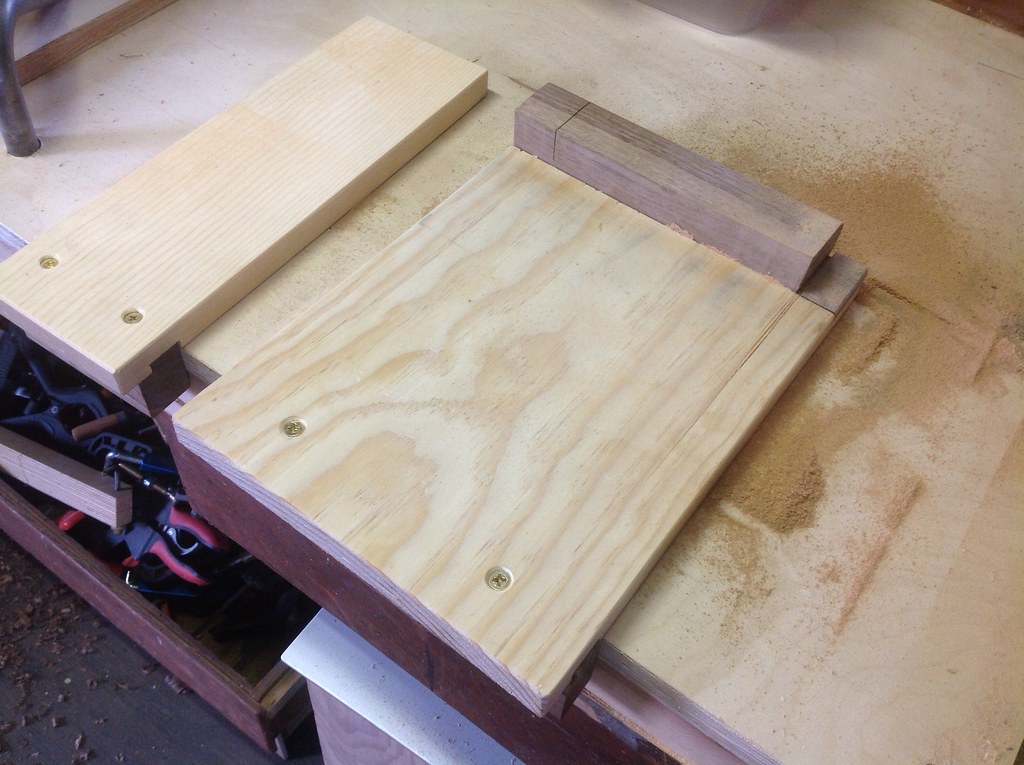


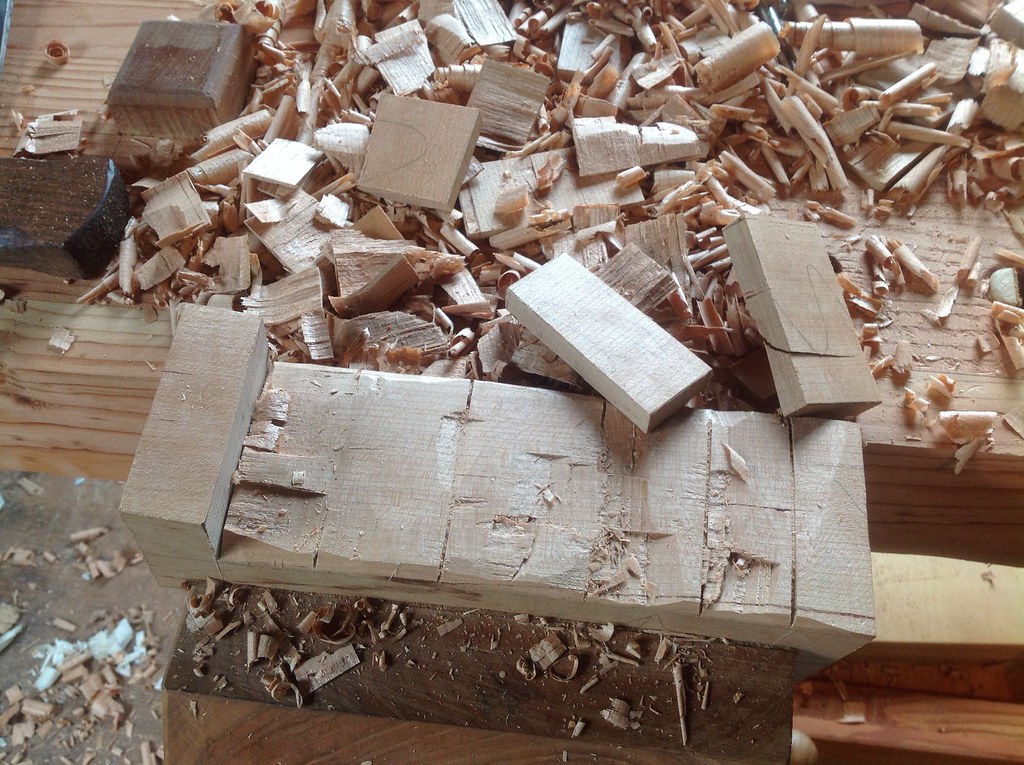

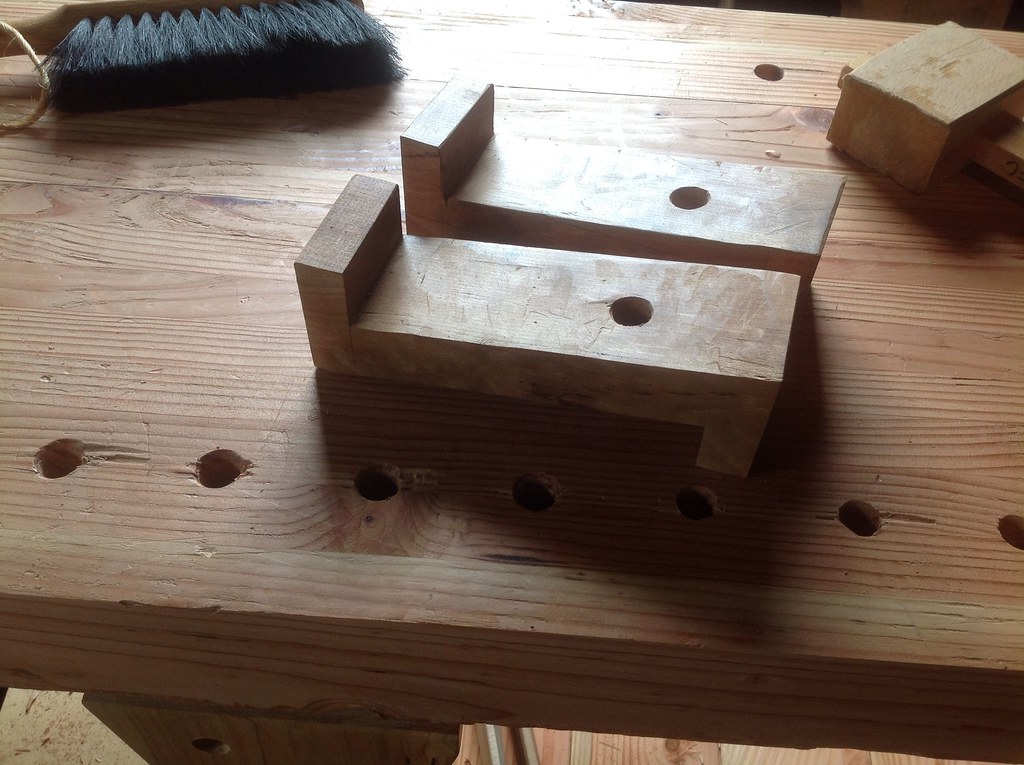
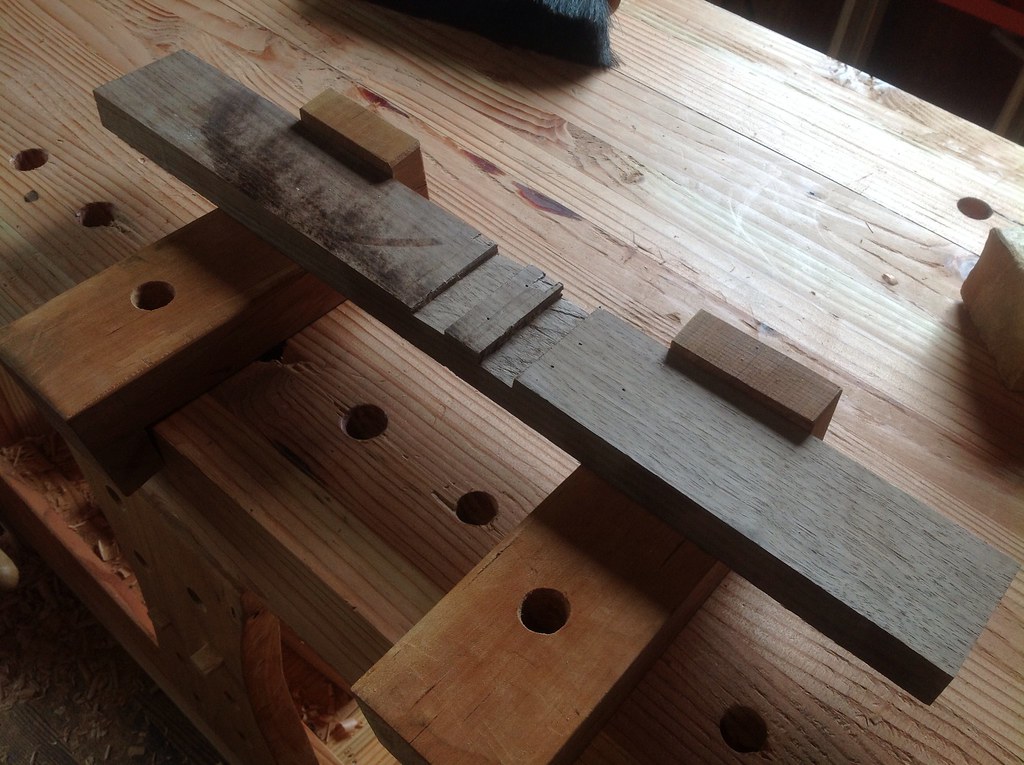
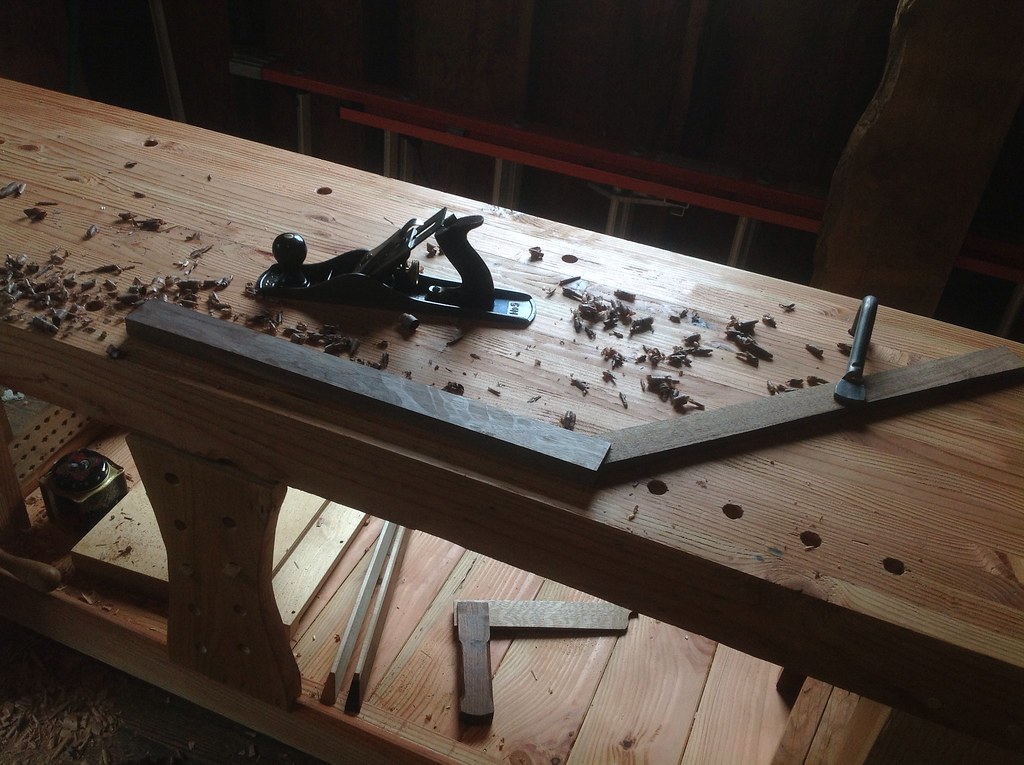
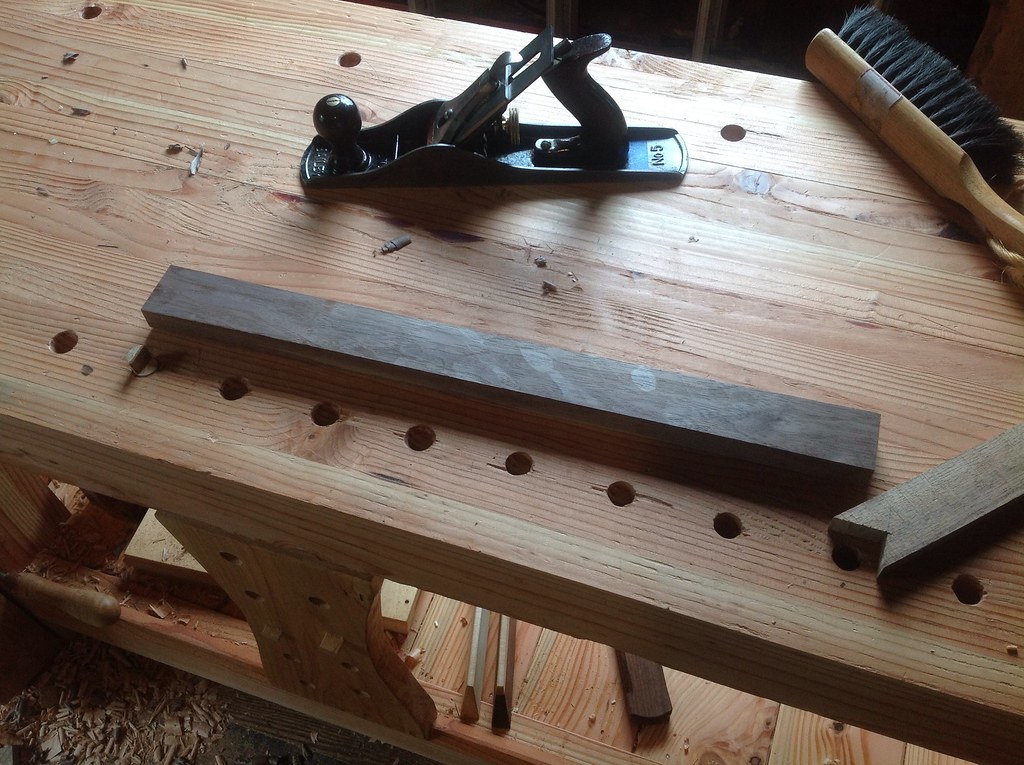
Good idea!
ReplyDelete"I also wanted to see if I could replicate some of the issues the students were having with learning to create dados smoothly and see if I could come up with some solid advice rather than "keep practicing".
Joel, I do indeed have some insight for the next batch of students. Thanks for reading.
ReplyDelete